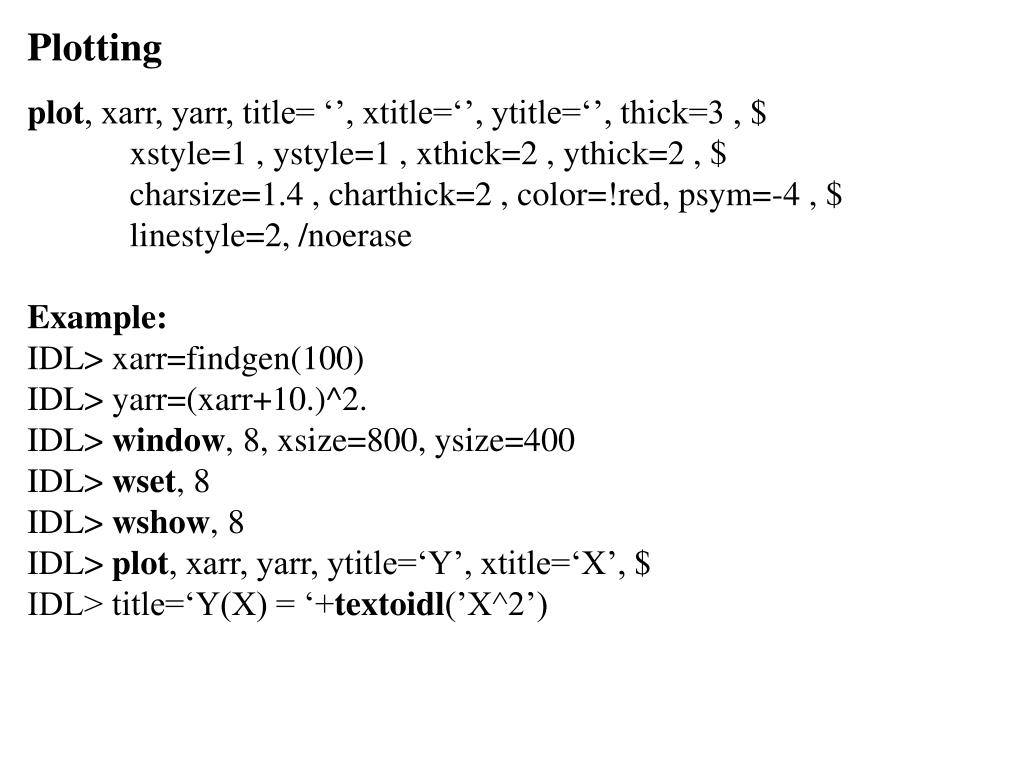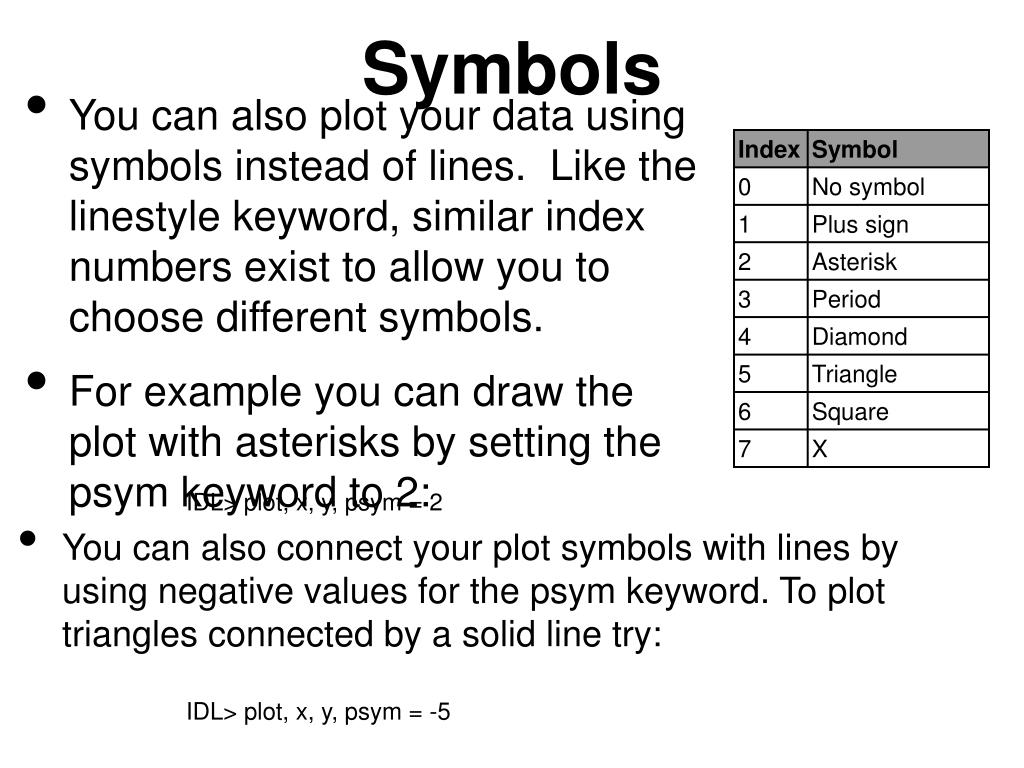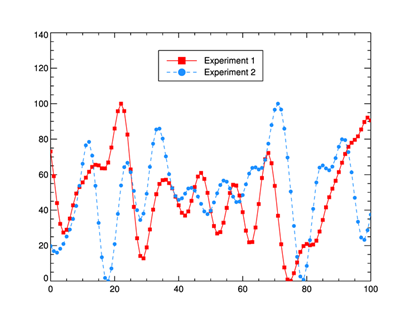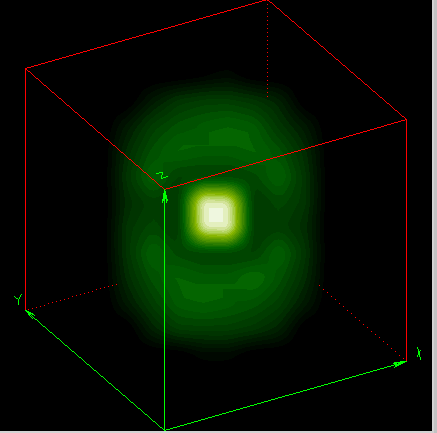


On logarithmic axes a geometric average is performed. If there are m data points, then m/NSUM points are displayed.

If NSUM is larger than 1, every group of NSUM points is averaged to produce one plotted point.

The presence of this keyword indicates the number of data points to average when plotting. Note that the IEEE floating-point value NaN is also treated as missing data. If this keyword is present, data values less than the value of MIN_VALUE are treated as missing and are not plotted. If this keyword is present, data values greater than the value of MAX_VALUE are treated as missing and are not plotted. Note: The X and Y axes will be scaled isotropically and then fit within the rectangle defined by the POSITION keyword one of the axes may be shortened. Set this keyword to force the scaling of the X and Y axes to be equal. Changing the value of a system-variable field changes the default for that particular parameter and remains in effect until explicitly changed. When specifying a keyword parameter name and value in a call that value affects only the current call, the corresponding system-variable field is not changed. Note: Many of the graphic keyword parameters correspond directly to fields in the system variables !P, !X, !Y, or !Z. This argument is converted to double-precision floating-point before plotting. Plots created with PLOT are limited to the range and precision of double-precision floating-point values. This argument is converted to double precision floating-point before plotting. If both arguments are provided, Y is plotted as a function of X. If X is not specified, Y is plotted as a function of point number (starting at zero). Graphics Keywords: ] Ī vector representing the abscissa values to be plotted. PLOT can also be used to create polar plots by setting the POLAR keyword. To plot one vector as a function of another, use two parameters. If one parameter is used, the vector parameter is plotted on the ordinate versus the point number on the abscissa. The PLOT procedure draws graphs of vector arguments. Note: Please see the newer PLOT function, which replicates the functionality of this older routine but offers an interactive interface and updated functionality.


 0 kommentar(er)
0 kommentar(er)
